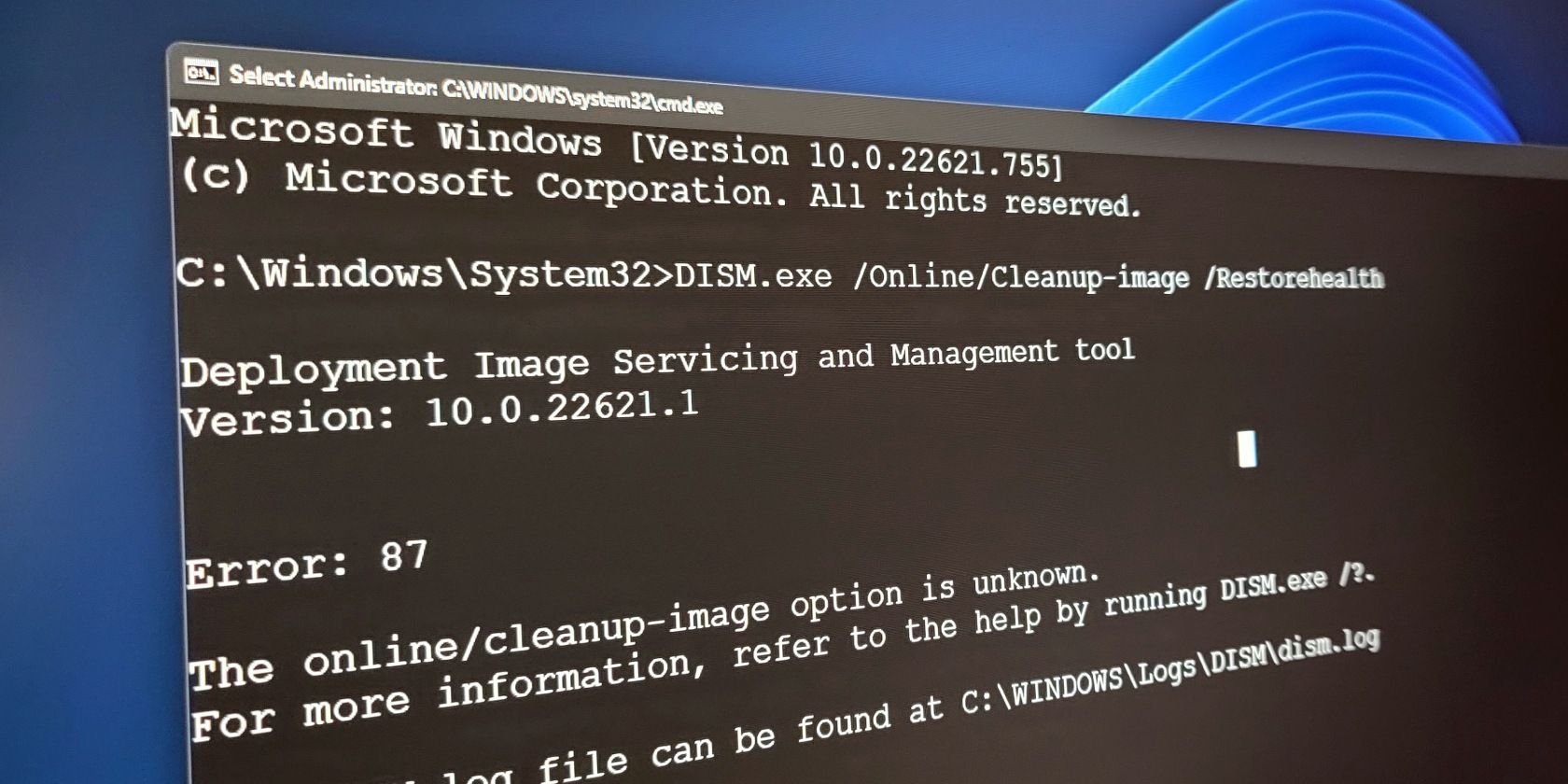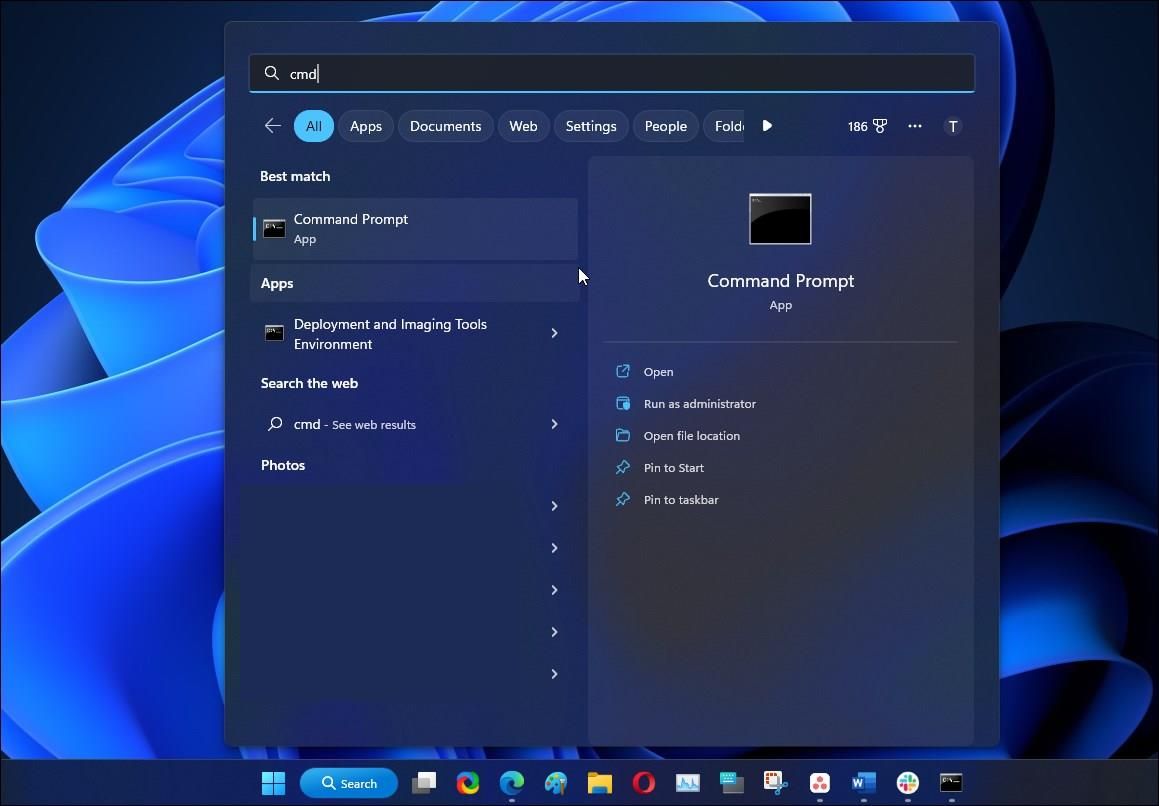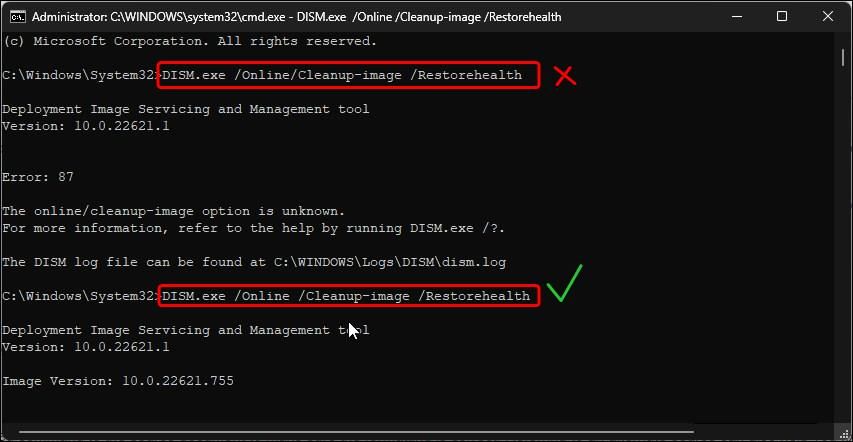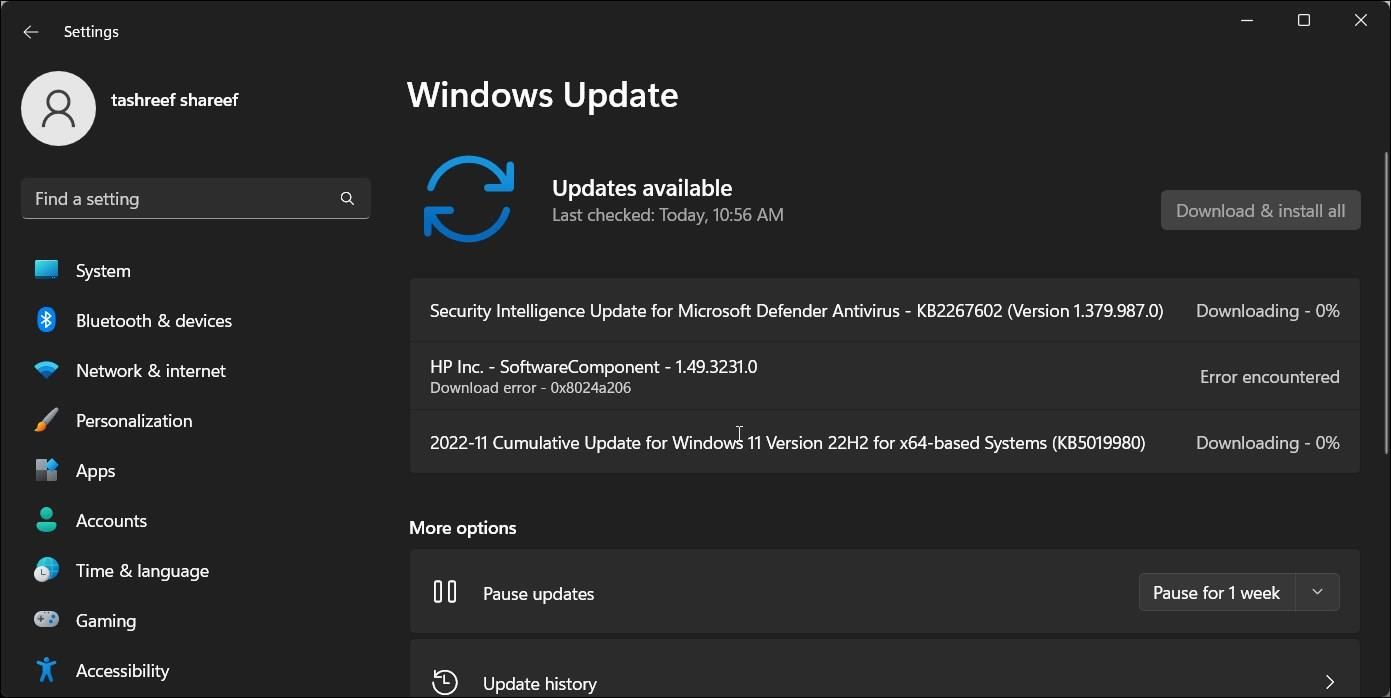4 Ways to Fix the DISM Error 87 on Windows 10/11

Get the DISM tools error 87 fixed and get back to scanning your PC for corruption with these tricks.
Windows 11 and 10 computers come bundled with built-in repairs and troubleshooting tools to fix the most common system issues. The Deployment Imaging Servicing Management (DISM) tool is an advanced system repair tool that can find and fix critical Windows errors on your PC.
DISM is a command-line utility. You can use it with predefined commands to perform repairs, uninstall and reinstall optional features, and various other tasks. However, the tool sometimes throws the “DISM error 87: the parameter is incorrect” message when you try to execute a command.
Here’s what causes the DISM error 87 and how you can fix it on Windows.
What Causes the DISM Error 87?
The error can occur due to several reasons. Often the DISM error 87 is followed by an error message. You may see the following error message with the DISM error 87:
- The parameter is incorrect.
- The option is unknown.
Here are a few common causes for the error:
- Not running the command in an elevated Command Prompt.
- Incorrect formatting of the command. Additionally, an incorrect command may also trigger the issue.
- A corrupt or buggy Windows update may also contribute to the problem.
Fortunately, you can quickly fix the error by reviewing the DISM command for incorrect command and formatting issues. Here’s how to do it.
1. Run the Command in an Elevated Command Prompt
The DISM command-line tool requires you to run the command with full administrator permission. Follow these steps to open the Command Prompt as administrator and then execute your command.
- Press the Win key and type cmd.
- Next, right-click on Command Prompt and select Run as administrator.
- Now try to execute the DISM command to see if the error is resolved.
2. Check for Incorrect Command Formatting
The use of incorrect command format is the common cause of DISM 87 error. If you have copied the command from a document, make sure the spacing between the command is correct.
For example, if you want to run the DISM Cleanup-Image command, it should look like this – DISM.exe /Online /Cleanup-image /Restorehealth – Note that each forward slash requires a space before it.
Incorrect formatting:
DISM.exe /Online/Cleanup-image /Restorehealth
Correct formatting:
DISM.exe /Online /Cleanup-image /Restorehealth
Compare your typed command to the source document to make sure the formatting is correct. Referring to an alternate source can also help you fix any issues with the command and formatting.
3. Check for Windows Updates
Check if there are any updates pending for your PC. Windows updates often bring performance improvement and bug fixes. Check if a critical update is available and install it to see if that helps fix the error.
To update your Windows computer:
- Press Win + I to open Settings.
- Open the Windows Update tab in the left pane.
- Windows will check for pending updates and show them if available. If not, click on Check for updates to find pending updates.
- Click on Download & install to apply the updates and restart your PC.
4. Perform a Windows Repair Install
A repair install can help you reinstall the Windows OS without deleting apps and data from your PC. This works like a Windows upgrade that allows you to reinstall a new version of the OS without deleting your existing files and apps.
If the upgrade doesn’t work, try to factory reset your Windows computer. With the reset option, you can choose to keep your data and reinstall the OS. However, this will remove all the third-party apps during the process.
Fixing the DISM Error 87 on Windows
Often the DISM error 87 is a case of an incorrectly formatted command. Make sure to verify the command for incorrect spacing to execute it without the error. Also, run the DISM command in an elevated Command Prompt to fix any permission issues.











